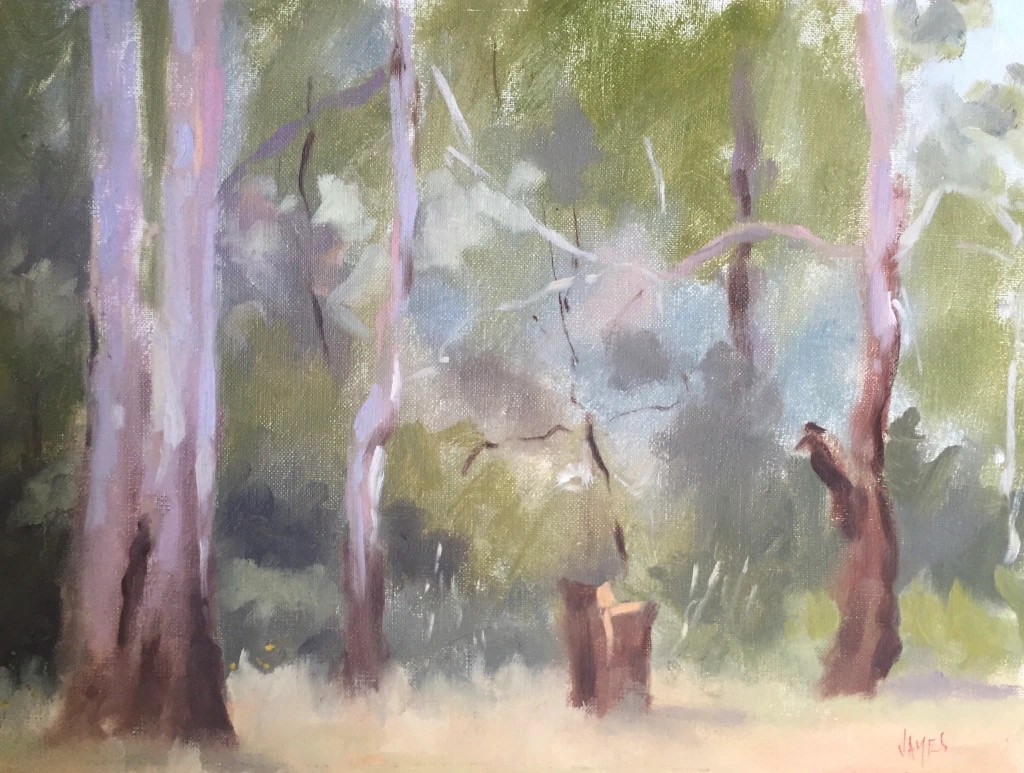
One of my earliest memories is of hearing my brother laugh at the Goons, a comedy show which used to be broadcast regularly on radio. I quickly learned to laugh at the knockabout antics of Neddy Seagoon, Eccles, Little Jim et al. I still enjoy listening to or watching these idiots nearly 70 years later, even though I have heard all of their sketches many times over. It is a bit like always being thrilled every time I see images ofJohn Singer Sargent’s magnificent painting of The Daughters of Edward Darley Boit. Having seen this wonderful painting in the flesh at the National Portrait Gallery in London in 1979 one could think that computer images would not touch ones heart, but no, I can gaze on that image and feel the thrill time and time again.
Another memory which remains strong is hearing the American comic Jimmy Durante singing his song about being the guy who found the lost chord. It is not often that comedy comes to mind when I am working but recently I was painting some Japonica in a clear glass Jicky Guerlain perfume bottle, a subject that I have enjoyed over the years and whilst completing the work, Alan Martin’s voice clearly said to me as he had in the 1980’s, “Remember, it’s not what you put into a picture but what you leave out that’s important!” Of course I have known this fact for years and have continued to celebrate lost edge in my work. I emphasise this idea with my student’s. and often tell them that when they find a lost edge that they should break out the caviar and champagne.
Hearing Alan put me in mind of great painters such as Sargent, Meldrum, Velasquez etc. and the paintings of theirs that I have looked at and enjoyed over and over again without noticing their lost edges.
Max Meldrum, in his book The Science of Appearances devotes chapter to ‘Objectivity vs Subjectivity’ which touches on this subject but all the aspiring realist painter needs to know was summed up very well by Alan Martin telling them what he had told me. Sounds simple but it is very difficult to overcome the need to paint what one knows to be there instead of what one can see easily. Much practice and discipline is required to do this but when a painter becomes the ‘guy’ or ‘gal’ who finds the lost edge it is truly time for a celebration.
Next time you look at a work of a painter that you admire, see if you can find their lost edges and also try to find them the next time you approach the canvas and see if you thrill to the sensation as I still do after 50 years of painting.
Don James
6th September 2021

Great lesson!
LikeLike
Thanks Leonie. Yet another rave.
LikeLike
I love them!
LikeLike